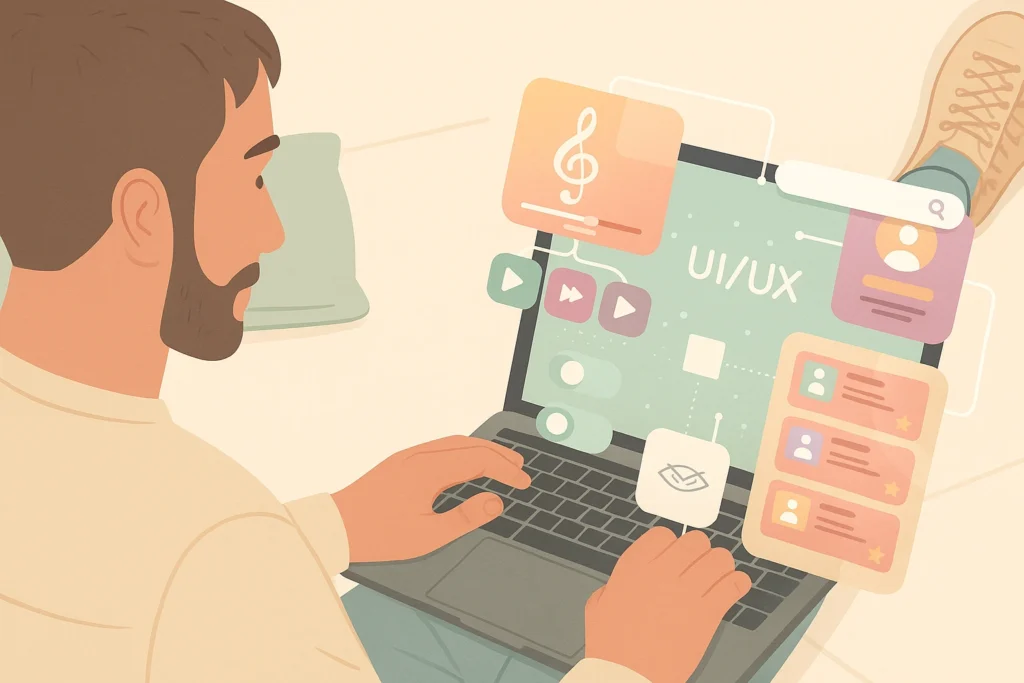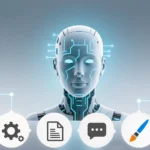Sometimes I catch myself thinking: apps have become too convenient. A couple of taps — and sushi is already on the way, the taxi’s at the door, the movie’s playing. Almost magic. But the more comfortable our digital lives become, the more demanding we get.
We no longer want just convenience — we want understanding. Not just a “user-friendly interface,” but one that feels like who we are, where we are, and what we want right now.
UX design has always been about empathy. But users today expect something even deeper — individuality. And that’s where Generative UI comes in: interfaces that AI creates in real time, uniquely tailored for each person.
Users Want More Than UX Can Give Today
Modern interfaces are a compromise. We design one product for millions of people, hoping it fits most. We research, build personas, test scenarios — but in this statistics-driven process, something crucial gets lost: the human being behind the screen.
Here’s what that looks like in real life:
- E-commerce. A user opens an online store for headphones. Hundreds of models appear — but the system doesn’t know this is a gift for a teenager, not a purchase for themselves.
- Banking apps. Practical users want detailed expense charts. Young users just want to check their balance. Yet everyone sees the same cluttered dashboard.
- Healthcare apps. Elderly users get lost in navigation. People with visual impairments can’t read the tiny text. A “universal interface” ends up serving no one perfectly.
AI Has Already Entered Design — But Only Halfway
Today, designers use AI to speed up workflows — generate text, choose color palettes, build screen mockups. That’s AI-assisted design — artificial intelligence helping designers, but not creating full interfaces yet.
Apps like Netflix, Spotify, and YouTube already adapt slightly to your behavior — recommending content or adjusting layouts. But that’s not Generative UI.
The real revolution begins when AI can build interfaces in real time, adapting every screen to your current context.
What Is Generative UI?
Generative UI is an interface created on the fly — at the exact moment you interact with it. AI analyzes who you are, where you are, what you’re doing, and your habits, and assembles a layout perfectly tuned to that situation.
No templates — only living context.
Case Study: Anna and Her McDonald’s App
Meet Anna, 35, a marketing specialist from New York. She has diabetes, mild visual impairment, and a habit of ordering lunch through the McDonald’s app while commuting.
Here’s how Generative UI transforms her experience:
- The app recognizes it’s lunchtime.
- It knows Anna usually orders a salad and sugar-free iced latte.
- It detects she’s holding her phone with one hand.
The interface rebuilds itself instantly: large, high-contrast buttons, “Your usual order” appears first, desserts and sugary drinks are hidden.
If it’s a hot day, the app suggests: “Try an iced latte with no sugar.” If Anna says, “Same as yesterday, but no sauce,” the AI understands and places the order automatically.
Now imagine this at scale: 100 million users, 100 million unique interfaces. Each one generated in real time.
The Future of UX: Designing for Adaptation
Generative UI will fundamentally change the designer’s role. We’ll move from crafting static layouts to designing adaptive systems — principles for how interfaces grow, shift, and respond to human behavior.
UX will merge with psychology, ethics, and philosophy. Everything will become flexible — from buttons and colors to microcopy and interaction logic. AI won’t just assist us — it will co-create with us, reading context, mood, and attention levels.
Within the next 3–5 years, we’ll see early implementations from tech giants like Google, Apple, and Amazon. And within a decade, static interfaces might disappear altogether.
Generative UI isn’t just a technological leap — it’s a return to the essence of UX: the human being. The interface stops being a screen and becomes a reflection of who we are, here and now.
As a designer, that idea excites me more than any tool or trend. It’s a new chapter where creativity, empathy, and AI merge into something alive.
Are we ready for a world where interfaces stop being the same for everyone? Where your McDonald’s, Netflix, or banking app looks different from mine because it understands you?
What do you think about the future of UX when interfaces become living systems? Share your thoughts — let’s start the conversation.


